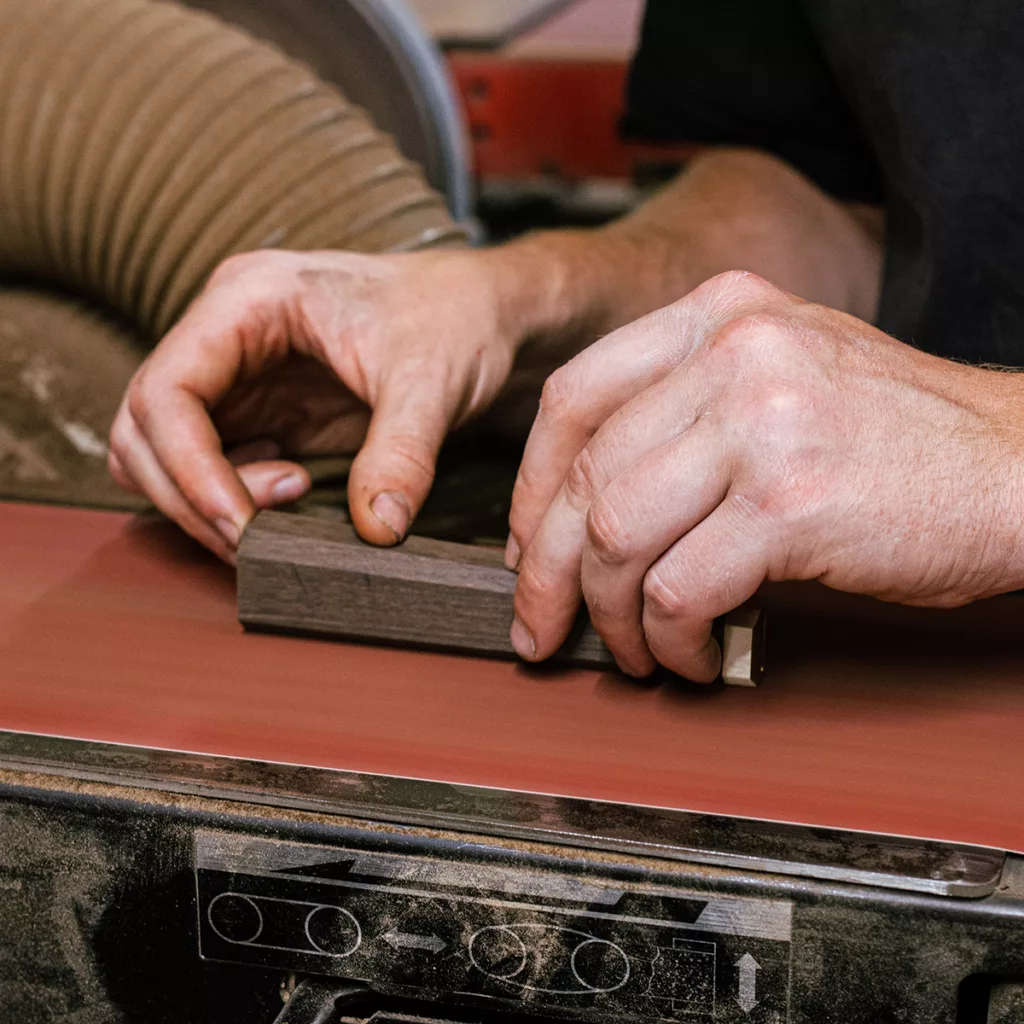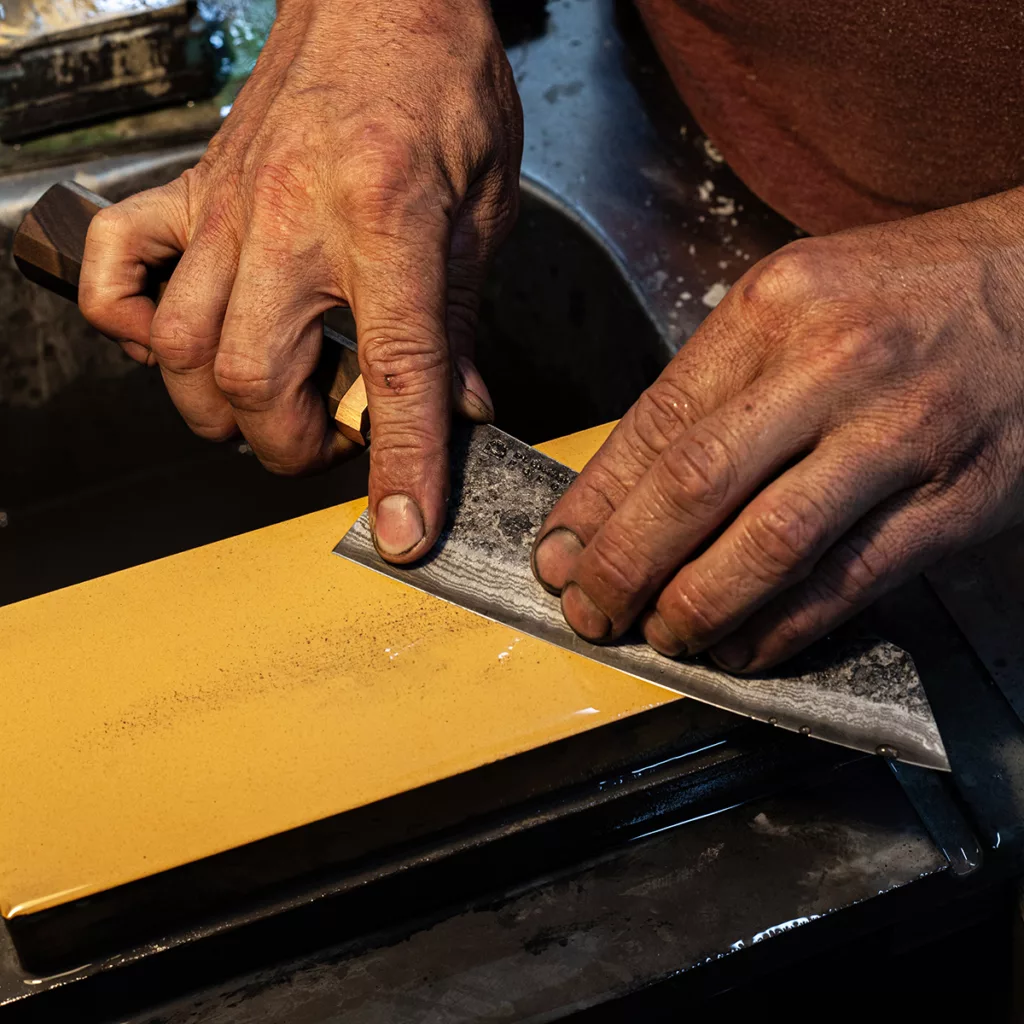Home / About
Self-taught knife making began as a hobby that James Ross-Harris and Jon Warshawsky cultivated in their back garden on a hand-made forge, fuelled by a blend of charcoal.
Over the years they have perfected their craft, focusing on fine-tuning the process of hand-forging in order to create knives of the highest character and performance.
Shortly after setting up, Blenheim Forge expanded to include machine-making extraordinaire Richard Warner, and moved into Arch 229, Blenheim Grove; a railway arch with a long history of metalwork artistry.
Blenheim Forge now sells their knives to chefs and cooking-enthusiasts around the world.
Tim Hayward, Author of 'Knife'
When Jon Warshawsky and James Ross-Harris founded Blenheim Forge in 2014, they had next to no idea how to make a knife. The pair originally met whilst sharing a house in south London, and used to fill their free weekends by knocking up DIY projects in their back garden. First, there was a meat smoker. Then, a hot tub to while away the winter evenings. Then, they thought they’d turn their hands to knife making. James built a forge out of fire bricks and a leaf blower, and the pair forged their first blade – a beautiful, pattern-welded number, with etchings all across the surface.


We fuse bars of raw steel together under precise conditions to produce our laminated steel billets. We then forge the blade to shape working in a taper in both directions, from heel to tip and from spine to edge.




The soft cladding is ground off to reveal the hardened core and define the cutting geometry of the blade. This bevel is then polished and etched to display the layers in the steel.




Arch 228-229, Blenheim Grove, London SE15 4QL